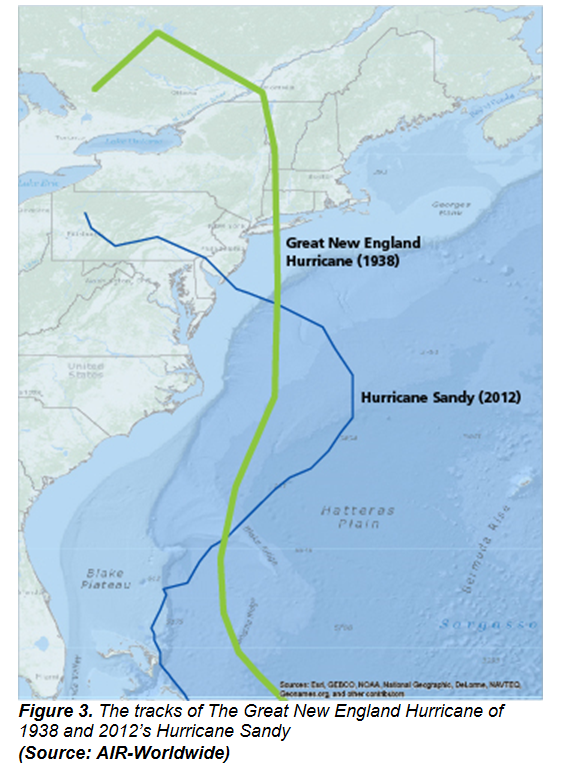Seventy-five years ago, “the Great New England Hurricane of 1938” laid waste over large areas of the northeastern United States. Last year’s Hurricane Sandy provided a more immediate reminder that the devastation hurricanes can cause is not limited to the southern coastal states. While other damaging storms struck the Northeast during the years that separate these two hurricanes, the relatively low frequency of these high-impact events complicates the effort to quantify the risk associated with them.
Executive Summary
The Great New England Hurricane of 1938 would cause $33 billion in insured damage today—and a number of storms even more powerful occurred in the distant past, according to narrative reports and studies of coastal soil profiles that are helping researchers examine the frequency of catastrophic Northeast U.S. hurricanes.The official data set of the National Hurricane Center (NHC) documents only six major hurricanes (Category 3 or higher on the Saffir-Simpson Hurricane Wind Scale) as having made landfall from New Jersey northward between 1851 and 2012: the Eastern New England Hurricane of 1869; the Great New England Hurricane of 1938; and Hurricanes Carol (1954), Edna (1954), Donna (1960) and Gloria (1985)—all shown in Figure 1.





















